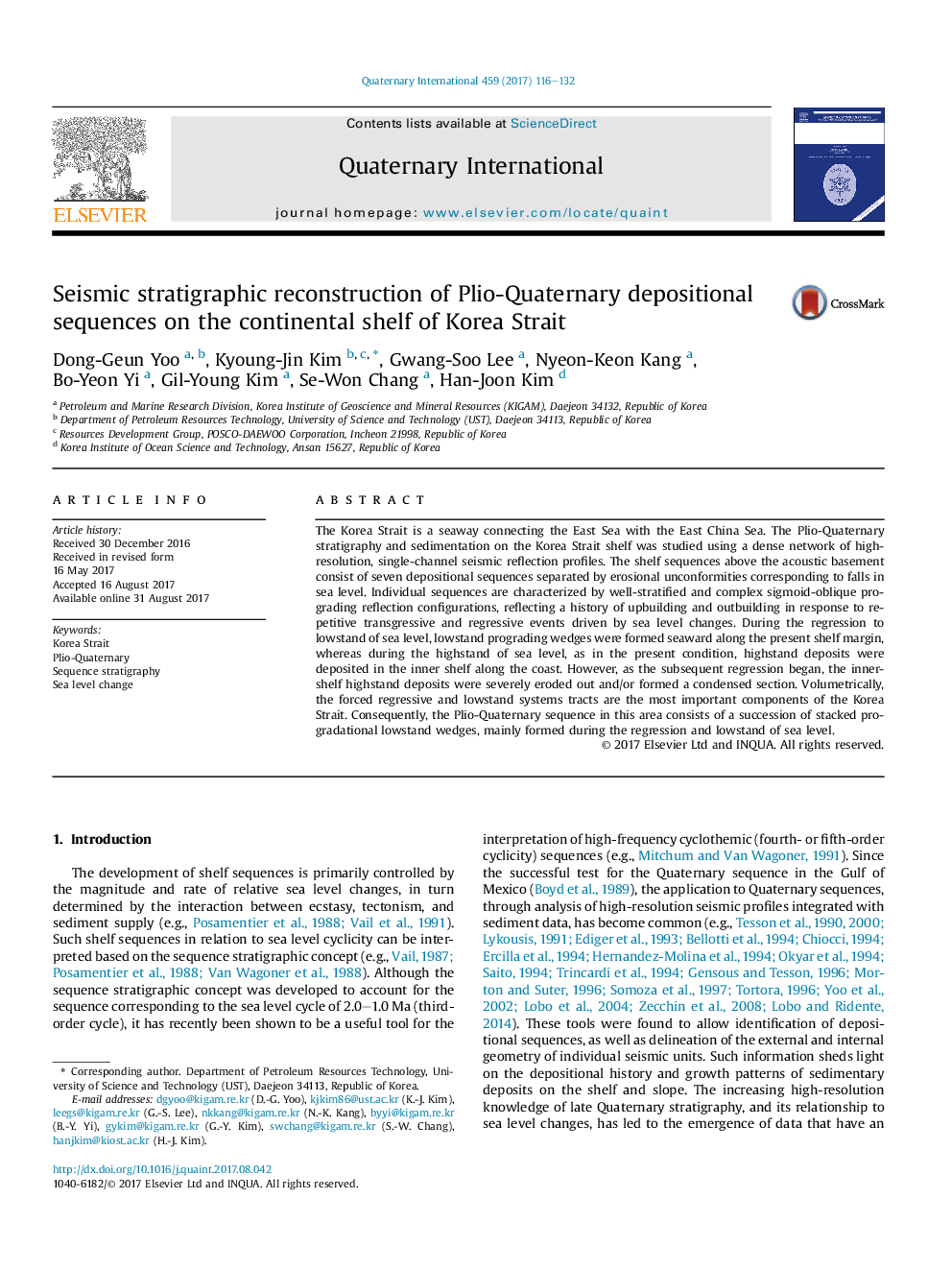| Article ID | Journal | Published Year | Pages | File Type |
|---|---|---|---|---|
| 7451215 | Quaternary International | 2017 | 17 Pages |
Abstract
The Korea Strait is a seaway connecting the East Sea with the East China Sea. The Plio-Quaternary stratigraphy and sedimentation on the Korea Strait shelf was studied using a dense network of high-resolution, single-channel seismic reflection profiles. The shelf sequences above the acoustic basement consist of seven depositional sequences separated by erosional unconformities corresponding to falls in sea level. Individual sequences are characterized by well-stratified and complex sigmoid-oblique prograding reflection configurations, reflecting a history of upbuilding and outbuilding in response to repetitive transgressive and regressive events driven by sea level changes. During the regression to lowstand of sea level, lowstand prograding wedges were formed seaward along the present shelf margin, whereas during the highstand of sea level, as in the present condition, highstand deposits were deposited in the inner shelf along the coast. However, as the subsequent regression began, the inner-shelf highstand deposits were severely eroded out and/or formed a condensed section. Volumetrically, the forced regressive and lowstand systems tracts are the most important components of the Korea Strait. Consequently, the Plio-Quaternary sequence in this area consists of a succession of stacked progradational lowstand wedges, mainly formed during the regression and lowstand of sea level.
Related Topics
Physical Sciences and Engineering
Earth and Planetary Sciences
Geology
Authors
Dong-Geun Yoo, Kyoung-Jin Kim, Gwang-Soo Lee, Nyeon-Keon Kang, Bo-Yeon Yi, Gil-Young Kim, Se-Won Chang, Han-Joon Kim,
